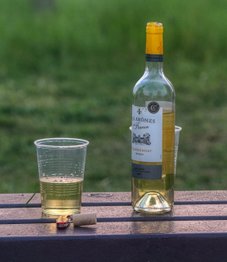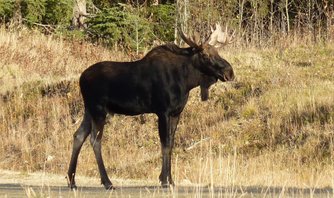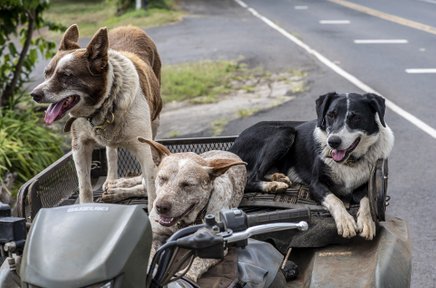Overlander's Guide to Sweden
Sweden
Known officially as The Kingdom of Sweden and is the third largest country in tthe European Union and the fifth largest country in Europe. It is know for vikings, nature and a rich history dating back to the last ice age.
Sweden offers a wide variety of both outdoor and indoor experiences for all ages. Stretching from the wide open countryside in the south to the alpine areas above the artic circle, Sweden is an overlanding paradise.
Welcome to Sweden
General Information
Language
The official language in Sweden is Swedish. There are also a number of minority languages spoken in Sweden.
Swedes start to learn English in the 3rd grade, and therefore most Swedes do speak English. Be kind and do not speak too fast and enunciate. Many Swedes find it easier to understand English than to speak it.
Holidays
Swedish banks, offices and businesses are closed on Swedish public holidays. The Swedish public holidays are:
- New Year's Day: January 1st
- Epiphany: January 6th
- Good Friday: The Friday before Easter Sunday
- Easter Monday: The Monday after Easter Sunday
- International Workers' Day: May 1st
- Ascension Day: 39th day after Easter Sunday
- National Day of Sweden: June 6th
- Midsummer's Day: The Saturday during the period June 20th - June 26th
- All Saints' Day: The Saturday during the period October 31st – November 6th
- Christmas Day: December 25th
- Second Day of Christmas: December 26th
When the holiday falls on a Saturday or on a week day, the day before is considered a "short day." Expect shops, businesses and public offices to close early.
Immigration
Entering Sweden
Sweden does not require any special paperwork to enter.
Length of Stay
A non-EU/EEA citizen has a maximum permitted stay of 90 days without a visa. For longer stays, a visa or work permit is needed. For more information contact migrationsverket or your local consulate or embassy.
EU/EEA citizens do not require a visa while travelling in Sweden, regardless of length of stay. For more information contact migrationsverket or your local consulate or embassy.
Leaving Sweden
There are no restrictions or paperwork needed to exit Sweden.
Currency and Shopping
Currency
The official currency is the Swedish Krona, written as SEK or simply kr. It is available both as coins and as bills.
The denominations are:
- 1kr - Copper coin
- 2kr - Copper coin
- 5kr - Gold coin
- 10kr - Gold coin
- 20kr - Paper bill
- 50kr - Paper bill
- 100kr - Paper bill
- 200kr - Paper bill
- 500kr - Paper bill
- 1000kr - Paper bill
As a visitor to Sweden, we advise you to be wary of which bills are current as some less reputable people may try to pass off older invalid currency on unsuspecting tourists. Images of current coins and bills can be found on Riksbankens web page.
Open hours
Stores and businesses in Sweden are generally open:
- Monday-Friday: 9am - 5pm
- Saturday: 10am-13pm
- Sunday: Closed
Banks in Sweden usually have limited hours. Not all banks accept cash. It is advisable to check the open hours of the bank office which you are going to in advance.
Shopping Bags
When you go shopping in Sweden, you are expected to either bring your own shopping bags or to purchase them. Paper bags are the most common shopping bags in Sweden, and they are of good quality and reusable. Plastic bags are not common.
Payment
It is important to note that Swedish stores and businesses do not always accept cash. Some stores accept cash but not credit cards. There is a Swedish payment system called Swish which most Swedes use for smaller payments using their mobile phone. Unfortunately Swish is only available to residents of Sweden.
Foreign bank cards without a digital security chip (it looks like a SIM-card) may not work in Sweden, and if it does it will be limited. Check with your bank regarding using your bank card in Sweden.
Sweden does not have the equivalent of checks, and Swedish banks generally do not accept foreign checks unless you are an account holder.
Travellers checks are not commonly used in Sweden, and are not accepted at all stores and businesses. You may need to find a foreign currency exchange place to cash your travellers checks.
Health Care & Emergency Services
Water
Tap water in Sweden is safe to drink. Bottled water is usually available in food stores.
Medication
As a traveller to Sweden you are allowed to bring medication for medicinal purposes as long as it is for personal use. If they are prescription medication you should bring written documentation from your doctor or other medical authority. For more information, contact Tullverket.
Health Care
EU, EES, and Switzerland
Sweden provides health care at the same rate as for Swedes for people coming from an EU-country, EES-country or Switzerland. You need to bring your European Health Insurance Card from your home country.
Other countries
If you are not from the EU, EES or Switzerland, you or your insurance company will have to pay for health care that you receive while in Sweden. Sweden does have agreements with several other countries about health care coverage. Contact your local health care insurer, the Swedish embassy or consulate, or Försäkringskassan for more information.
Emergency
In case of emergency call 112 from any phone. It will get you to emergency services such as fire, police, and ambulance.
Recycling
Recycling
Swedes are very good at recycling, and very proud of their recycling efforts. Not recycling is frowned upon by many Swedes.
The main categories of recycling are:
- Paper
- Plastic
- Glass (clear)
- Glass (colored)
- Metal
- Cardboard
Recycling centers are very common in Sweden, even in smaller towns.
Deposits
Bottles, cans and some other packaging often have a deposit on them ("Pant"). The amount varies by the size of the container. Most grocery stores accept bottles and cans for deposit. It is important to not crush the cans and bottles with deposit as the machines read the bar code on the package in order to refund your deposit.
Non-Swedish bottles and cans cannot be refunded in Sweden. They can be recycled as regular glass, metal or plastic
Culture
Swedish Culture
Swedish culture varies greatly around the country. This makes Sweden such a great place to overland as you can experience so many different cultures in one country.
Food and Drink
Alcohol
Regular grocery stores are only allowed to carry products containing up to 3.5% alcohol. You need to be 18 years old to buy alcohol up to 3.5%
Stronger alcohol in Sweden is only available through government stores named Systembolaget. You need to be 20 years old to buy alcohol content above 3.5%.
At age 18 you are also allowed to buy alcohol in restaurants and in bars.
In Sweden, a light beer has nothing to do with calories. It refers to the alcohol content which is 3.5% or less.
In rural areas where there are no Systembolaget, the local grocery store or gas station may act as an agent for Systembolaget. You leave your order with the store, and a few days later you can pick it up. Ask the locals for the closest "Systemet".
Climate
Swedish Climate
Swedish climate varies greatly from south to north and summer to winter. Make sure you are properly prepared for the season and area you plan on travel in.
Geography
Swedish Geography
At over 450,000 square kilometers, Sweden provides just about any type of terrain and nature that you want to experience. Sweden has a coastline of 3,200 km providing sandy beaches, fjords, and island filled archipelagos.
The highest point is the mountain Kebnekaise and the lowest is the city of Kristianstad.
Nature
Wildlife
Rural Sweden is full of wildlife, and vehicular encounters with wildlife are not uncommon.
Swedes pride themselves on their connection to nature and wildlife, and hunting is a popular pasttime.
there are a couple of animals that you have to be aware of when out and about in nature in Sweden:
Snakes
Snakes are protected by law. Sweden has three species of snakes: the grass snake, the smooth snake and the viper.
The grass snake (Natrix natrix) is easily identified by its yellow spots behind it's ears. It hass a black or gray body and can grow up to a meter long. It lives in the southern half of Sweden. It is not poisonous.
The smooth snake (Coronella austriaca) has a brown or gray body color with two rows of broken lines along the back of its body. It can grow to 80cm long and only lives in southern Sweden.
The European viper (Vipera berus) is also known as the European adder. It is identified by the zig-zag pattern on its back. The can grow to a length of 100cm, but are rarely more than 65cm in length. The viper is the snake that can be found the furthest north in Sweden and can be found throughout the coutry. It is Sweden's only poionous snake. It is believed that one third to half of the viper bites that occur on humans are dry, or in other words, that the snake does not inject any venom. These are protective bites and the snake just wants to get away when feeling threatened. If bitten by a viper, you should leave the wound alone, avoid moving around and go to a hospital or emergency center. If you start feeling ill, nauseus or have problems breathing call 112.
Wolves
The wolf (Canis Lupus) is a controversial animal in the Swedish fauna. They are a social animal that lives in flocks, and an adult wolf can weigh up to 50kg. Attacks on humans is very rare. When traveling in the wild in wolf country take care with small children and pets to not let them run off on their own. If you are lucky enough to see a wolf, it will most likely either pass you by or avoid you. If it shows interest in you, stay calm and try to appear larger. Wolves exist throughout Sweden.
Bears
The brown bear (Ursus arctos) is related to the Grizzly bear and the Kodiak bear. They stand between 90cm and 150cm at the shoulder and weigh in anywhere from 100kg to 300kg depending on the time of year. The brown bear lives in the northern half of Sweden. Bear attacks are rare, and are often a result of the bear having been wounded by a hunter. If you see a bear and it makes eye contact, stay calm, talk softly and walk away. Do not run as this may cause the bear to attack. If the bear attacks, it is most likely trying to frighten you away from its cubs or food and will stop a few meters from you. If it starts to maul you, you should lie on the ground in the fetal position and cover your head and neck with your arms.
Insects
Insects, and in particular hornets, bees and wasps are the most common animal related injuries and deaths in Sweden. Take care to not accidentally swallow a bee or wasp that is drinking from your glass or trying to steal your food. Do not bother nests that you may encounter. If stung, remove the stinger and place something cool on the sting. You can apply alsolgel or hydrocortizone to reduce the pain. If you are stung in the mouth or throat or are allergic to the sting, seek medical attention immediately.
Mosquitos
If you visit northern Sweden, you will understand why we are giving mosquitos their own section. The flying hyperdermic needles are so numerous they can darken the sky. All kidding aside, the mosquito and its sibling the gnat can ruin your trip if you are not properly prepared. While a single musquito isn't much of a problem, their sheer number can drive you crazy.
There are over 2500 species of mosquitos in Sweden, but only about 30 species are blood suckers. They like to be around standing water where they lay their eggs and the larva develop. The Swedish nature that gives us so many varied habitats and wildlife is also ideal for mosquitos. Mosquitos love the warm humid summers in Sweden, especially the north. You winter warriors will be happy to know that mosquitos are only around in the warmer months.
Mosquitos like dark colored clothes, especially blue. Wearing light colored clothes help you blend into the landscape as mosquitos have fairly poor vision. They also seem to prefer some people over others. This is a time to not be popular.
Have mosquito netting on your tent, vehicles and hiking gear. Also remember to protect your pets. Apply mosquito repellent according to the manufacturer's guidelines. Note that this is a case when more is not necessarily better.
Plants
Swedes enjoy picking plants in nature for eating and other uses. Mid to late summer is a berrypicker's paradise, and fall is a prime time for mushroom hunting and lingonberries. Local bookstores and libraries often carry books on edible plants and mushrooms, and we highly recommend you enjoy the natural buffet that Swedish nature offers. Just remember to not ask locals for their favorite mushroom hunting spots! Mushroom and berry picking spots are closely guarded secrets which are sometimes passed down through generations. Ask instead of where to enjoy local plants and nature, and they might just give you a hint to where you should head. And remember that the best way to discover mushrooms or berries is to know the type of terrain they prefer.
there are a couple of plants that you have to be aware of when out and about in nature in Sweden:
Stinging Nettles
Stinging nettles (Urtica dioica) has tiny hairs that can cause a stining or burning sensation and irritation when it comes in contact with your skin. The symptoms are generally gone after 12 hours, but start to diminish after about 5 minutes. Hydrocortizone cream can reduce the symptoms, but they will diminish on their own. Young plants are used to make soup by Swedes.
Giant Hogweed
The giant hogweed (Urtica dioica) is phototoxic and should be avoided, especially children. Contact with the plant's sap prevents the skin from being able to protect itself from sunlight, and a serious skin irritation results. The phototoxic reaction can occur as soon as 15 minutes after contact, and can last for several days. If you come in contact with the weed, wash the area with soap and cold water as soon as possible, and exposure to sunlight should be avoided for at least 48 hours.
There are also a large number of poisonous plants in Sweden. Most of them cause an upset stomach or diarrhea When in doubt, don't eat a plant.
Other Considerations
Travelling with Pets
If travelling with a pet, contact Jordbruksverket for current information on travelling with animals.



